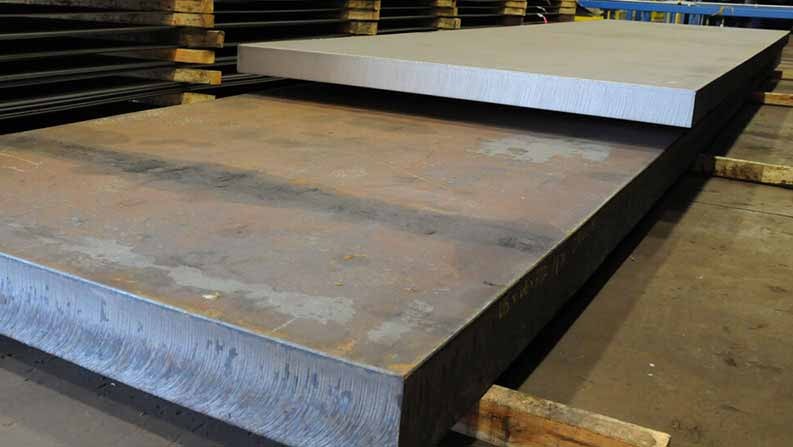When it comes to heavy-duty industrial and structural applications, choosing the right material is crucial. One such material that has become increasingly popular in sectors like construction, infrastructure, heavy machinery, oil & gas, and shipbuilding is the IS 2062 E350BR plate. Known for its superior mechanical strength, excellent weldability, and durability, IS 2062 E350BR is a structural steel grade under the Indian Standard IS 2062.
This blog explores why IS 2062 E350BR Plate are ideal for heavy applications, diving deep into their composition, properties, advantages, and widespread applications. Whether you’re a construction engineer, procurement professional, or simply a curious learner, this guide will provide all the insights you need.
Understanding IS 2062 E350BR Steel Plates
IS 2062 E350BR is a carbon-manganese steel plate known for its high tensile strength and superior impact resistance, making it suitable for dynamic and load-bearing applications. The designation “E350” refers to its minimum yield strength of 350 MPa, while “BR” stands for impact resistance at room temperature.
These plates are hot-rolled and come with high ductility and strength, enabling them to perform well under harsh conditions, including high stress and variable temperatures.
IS 2062 E350BR Mechanical Properties
The mechanical properties of IS 2062 E350BR are what make it a perfect fit for heavy-duty environments. These properties ensure the material can withstand high pressure, load, and external force without deforming.
Here are the key IS 2062 E350BR Mechanical Properties:
| Property | Value |
|---|---|
| Yield Strength (Min) | 350 MPa |
| Tensile Strength | 490 – 630 MPa |
| Elongation | 22% (minimum) |
| Impact Strength | 27 Joules at 0°C (BR grade) |
| Thickness Range | 6mm to 150mm |
Chemical Composition of IS 2062 E350BR
Understanding the chemical composition helps us realize how the alloying elements contribute to the overall strength and performance of the plate.
| Element | Maximum % |
|---|---|
| Carbon (C) | 0.20 |
| Manganese (Mn) | 1.60 |
| Sulphur (S) | 0.045 |
| Phosphorus (P) | 0.045 |
| Silicon (Si) | 0.45 |
| Carbon Equivalent (CE) | ≤ 0.45 |
Key Features of IS 2062 E350BR Plates
Here’s what makes IS 2062 E350BR steel plates stand out in heavy-duty sectors:
1. High Yield and Tensile Strength
The high yield strength (≥350 MPa) ensures the steel maintains its shape and structure under heavy loads, making it ideal for load-bearing construction.
2. Superior Impact Resistance
Thanks to the “BR” classification, the plate can absorb high-energy impacts even at 0°C, which is crucial for applications in colder climates or fluctuating temperatures.
3. Excellent Weldability and Formability
Due to its controlled carbon content and low CE value, the material supports various welding and forming techniques without cracking or losing strength.
4. Corrosion and Weather Resistance
While not stainless, these plates offer good resistance to atmospheric corrosion, especially when coated or painted, enhancing longevity in outdoor applications.
5. Versatility in Thickness and Size
Available in a wide range of thicknesses (6mm–150mm) and custom dimensions, making it suitable for small to large-scale structures.
Applications: Where IS 2062 E350BR Plates Excel
1. Construction and Infrastructure
From bridges and flyovers to multi-storey buildings and dams, the high strength-to-weight ratio of these plates reduces material consumption while ensuring safety and stability.
2. Shipbuilding and Marine Applications
In this sector, impact resistance and strength are essential. IS 2062 E350BR plates meet these requirements with ease, providing durability in marine environments.
3. Heavy Machinery and Equipment
For manufacturing cranes, bulldozers, dumpers, and other industrial machines, the mechanical strength and toughness of the plate are invaluable.
4. Oil and Gas Industry
Used in storage tanks, pressure vessels, and platform structures, these plates offer excellent load-bearing capacity and resistance to stress corrosion.
5. Railways and Transport
Railway wagons, coaches, and structural components use E350BR plates for safety, fatigue resistance, and long service life.
Advantages Over Other Grades
When compared with lower-grade carbon steel like IS 2062 E250BR, E350BR offers significantly better performance under stress, greater impact strength, and improved service life. This makes it suitable for critical structures and not just standard support elements.
| Property | IS 2062 E250BR | IS 2062 E350BR |
|---|---|---|
| Yield Strength (MPa) | 250 | 350 |
| Impact Resistance | 27J at 0°C | 27J at 0°C |
| Applications | Light structural | Heavy-duty structural |
Common Standards and Certifications
IS 2062 E350BR plates conform to Indian Standards (Bureau of Indian Standards – BIS) and may also comply with international equivalents like:
| Standard | Equivalent Grade |
|---|---|
| ASTM A572 Grade 50 | High-strength low-alloy steel |
| EN 10025 S355JR | Structural Steel |
| JIS G3106 SM490A | Rolled Steel for Welded Structures |
Conclusion
The IS 2062 E350BR plate has proven itself to be a reliable, versatile, and high-performing material for heavy applications. Its mechanical properties, particularly its high yield strength, tensile strength, and impact resistance, make it ideal for projects where safety, durability, and structural integrity are paramount. Whether you’re designing a bridge, a heavy vehicle chassis, or a pressure vessel, IS 2062 E350BR is a cost-effective, high-strength solution that delivers unmatched performance.

